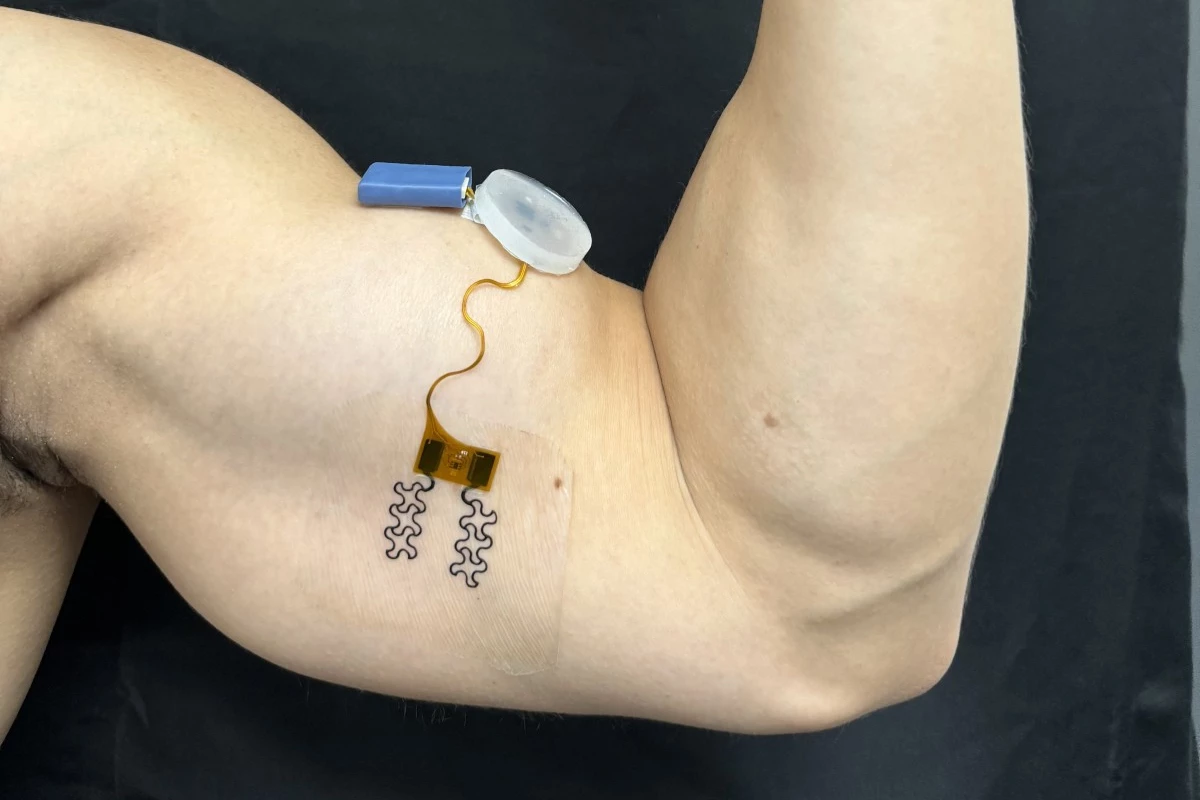Much like the low-fluid warning light in a car, a new wearable sensor linked to a smartphone app is set to alert people when their hydration levels are dangerously low. The device could be a big help to athletes, first responders, and many others.
While advice about how much water you need to drink seems to be as variable as the tides, the signs of dehydration are something all medical professionals can agree on. When someone is a little dehydrated, strong thirst, dizziness, and fatigue set in. If that person doesn't get fluids on board, more serious symptoms can develop, including a rapid heartbeat, low blood pressure, confusion, delirium and – in the most severe cases – shock.
One of the less visible symptoms of dehydration is that the body's tissues become poorer conductors of electricity. That's because water conducts electricity well, so when there is less of it in our tissues, they become resistant to the current. This is known as bioimpedance.
Seeking to exploit this fact, researchers at the University of Texas at Austin developed a portable battery-powered sensor that affixes to the bicep, sends an undetectable current through the tissue and measures the resultant resistance. The data from the device is continuously sent wirelessly to a smartphone for real-time hydration tracking.
In testing the device, the researchers induced dehydration in volunteers through the use of a diuretic. After dehydration was achieved, the team took urine samples and compared the chemical markers of the condition to the measurements produced by the sensor and found a strong correlation between the two.
“Our experiments demonstrated that arm bioimpedance is not only sensitive to hydration changes but also aligns closely with whole-body hydration measurements,” said Matija Jankovic, co-author of the study detailing the work in the journal PNAS. “This means the sensor can be a reliable surrogate for tracking hydration levels, even during everyday activities like walking, working, or exercising.”
In addition to helping people monitor their hydration levels throughout the day, the sensor could also be a huge help to those who need to wear heavy clothing in hot climates such as soldiers, police officers, firefighters, and athletes, for whom dehydration is a constant concern. The sensor could also find its way into medical settings, continuously monitoring hydration levels for patients suffering from kidney issues or cardiovascular disease, for example.
The research team says that its next step is to establish baseline hydration level data by testing the device on a large population of participants. The researchers also say they are investigating other formats for hydration-monitoring devices. Study lead Nanshu Lu has already worked on projects including sweat-monitoring wearables and e-tattos we reported on a few years ago that they developed for use as heart monitors or as mobile EEGs, and she says such systems could also be adapted to monitor hydration.
“This is just the beginning,” said study lead, Nanshu Lu. “Our goal is to make simple hydration monitoring accessible to everyone."
Source: University of Texas at Austin




